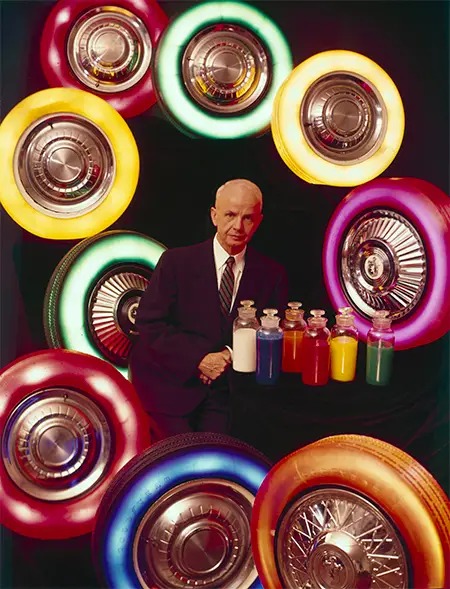Rubber is naturally white, so why are car tires black?
We all know that the main component of tires is rubber; however, rubber is naturally white. So, why are car tires black? What’s the explanation behind the black color of tires?
In the early 20th century, tires were primarily made from iron. However, these tires had limitations, such as insufficient durability at high speeds, noise generation, low friction, and rapid wear and hardening.
In 1895, the first rubber tire was introduced. Made from natural rubber, these tires had a milky white color.
However, manufacturers quickly realized that pure rubber tires were not durable and wore out rapidly. Additionally, these tires would stiffen in cold weather and soften in hot weather, leading to quick damage and reduced safety.

To address these issues, zinc oxide was added to enhance durability. Tire treads were also introduced to improve traction. With these advancements, white rubber tires continued to be used on many luxury cars.
However, during World War I, there was a shortage of zinc oxide due to its use in ammunition. In this situation, tire manufacturers turned to carbon black, a byproduct of incomplete combustion of crude oil or natural gas in oxygen-deprived conditions. Carbon black, discovered by Sidney Charles Mote and a group of scientists in the UK in 1904, stabilized over 20 chemical compounds, enhancing the elasticity, resilience, and durability of rubber.
Carbon black also protected tires from ultraviolet radiation, preventing rubber from becoming brittle and susceptible to cracking. Additionally, tires using carbon black dissipated heat, reducing the impact of temperature on rubber durability.
By 1915, after extensive research, scientists developed a material mixed with rubber for tires that reduced wear and increased tire life four to five times. This material was carbon black, making tires black.
Historically, what colors have tires been available in?

In the 1950s, tires were even produced in various eye-catching colors such as orange, red, and yellow. However, these colorful tires were found to become brittle, discolored, and prone to cracking after some use.
Manufacturers discovered that the synthetic compounds in colorful tires reacted with ozone and infrared rays from the sun, leading to chemical reactions that distorted the tire’s properties. Due to their reduced durability compared to black tires and higher costs, colorful tires quickly faded from the market.
In terms of aesthetics, black tires make vehicles look cleaner and hide dirt better than tires of other colors.
Today, while some people customize the external appearance of their tires by painting them or adding colorful lettering, the inherent color of the tire is black from the beginning.
1001 questions: Why are car tires black?
White and light yellow tires look quite eye-catching, however, if left for a long time, they will quickly dry out, become discolored and crack. The main cause of tire deterioration is the exposure of rubber and other synthetic substances to ozone, an odorless gas that exists in the atmosphere.
When ozone combines with ultraviolet rays in sunlight, it causes a chemical reaction that is harmful to polymer tires. And to overcome this situation, scientists have invented a type of substance containing stabilized molecules called “competitive absorbers”, which will retain and absorb ultraviolet rays, converting them into Heat is released into the environment. And since then, this invention has been widely applied in tire production technology. In addition, all tire manufacturers use the same absorbent, carbon black powder, which accounts for up to 30% of the tire’s structure, helping to prevent tire wear and absorb ultraviolet rays. purple and helps prevent rubber from cracking, increasing product life by up to 5 times. That’s why all tires are black.
Also in the tire manufacturing industry, manufacturers also mix wax compounds that cause the tire to stretch when moving, causing wax molecules to move to the surface, creating a protective layer in the air ( containing oxygen, ozone) and tire polymer, this process is called blooming coating.

However, when the car is parked for a long time, the blooming process does not take place because there is no tire movement, ozone and ultraviolet rays continue to attack the tire tread, causing the tire to quickly degrade.
Besides, after being used for a long time, tires often turn gray, the reason is because this absorber will be corroded when exposed to ozone and ultraviolet rays. After a while, carbon will lose its ability to absorb.
In terms of aesthetics, black tires also help the car look strong, modern, stain-free and suitable for all paint colors.












